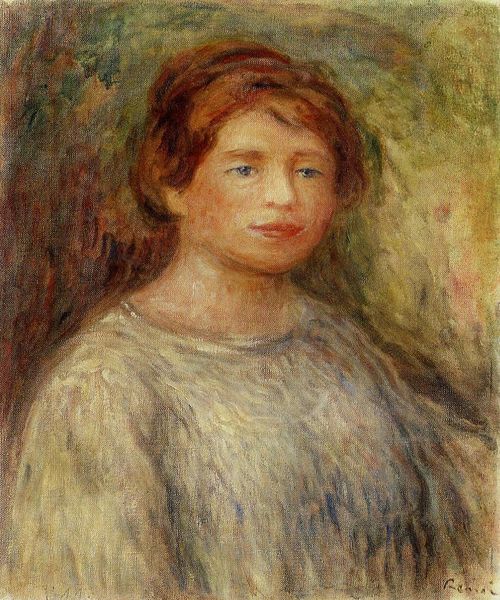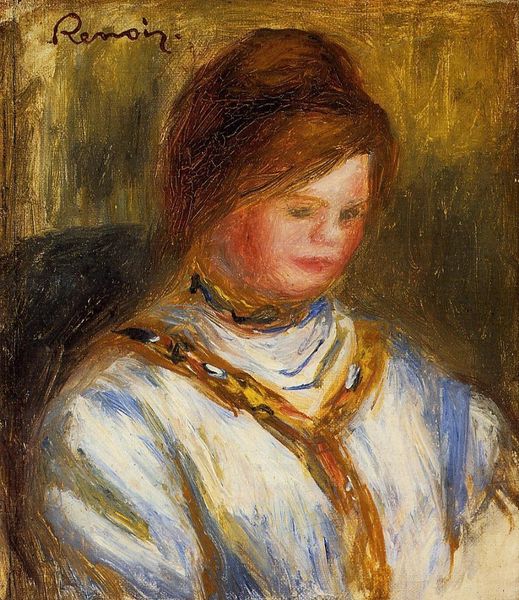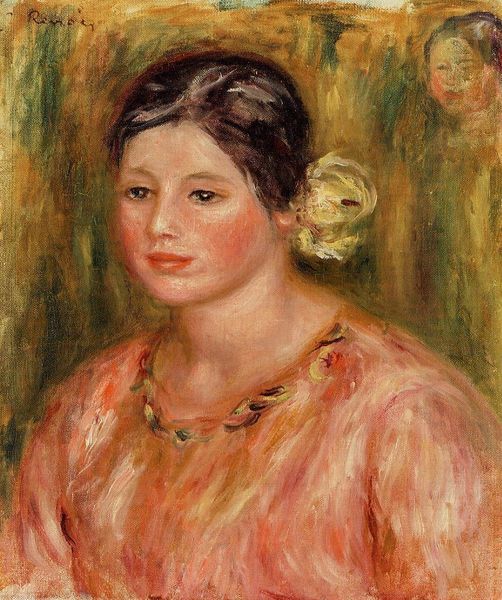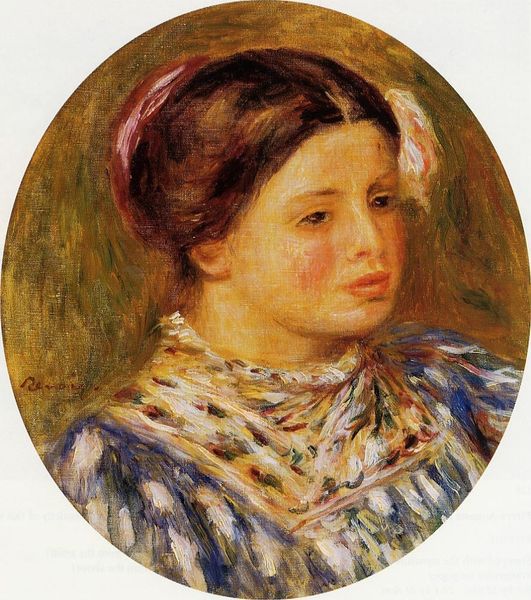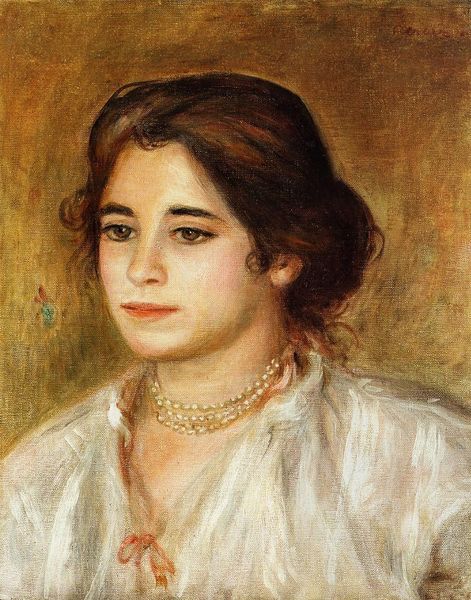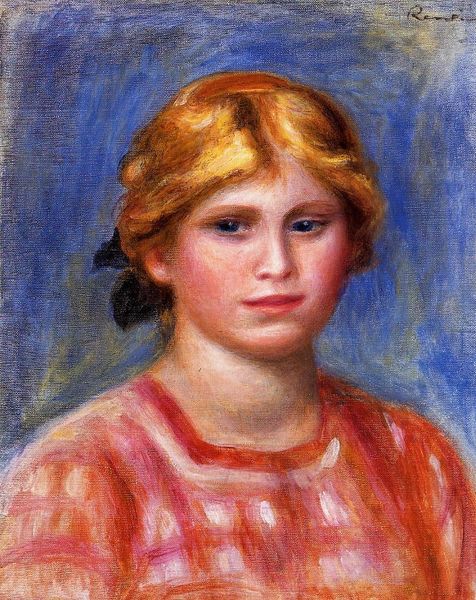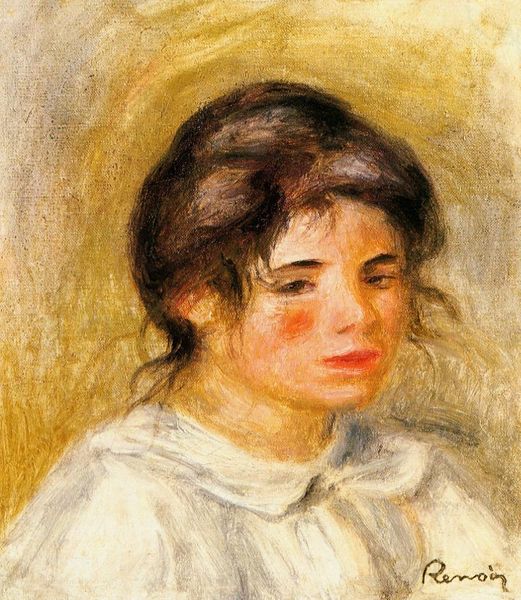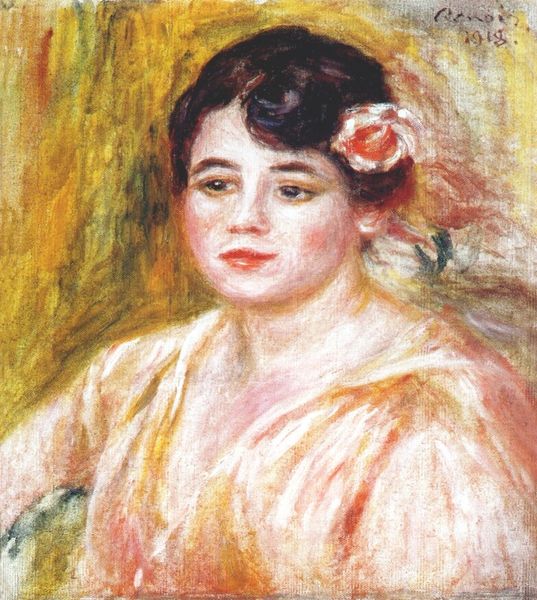
Copyright: Public domain
Curator: Painted in 1912, this is Renoir’s “Portrait of Marie Lestringuez.” Editor: It's a very soft image, isn't it? Almost like looking through a heat haze. The brushstrokes seem to blend together. Curator: Yes, that characteristic hazy texture comes from Renoir's distinctive oil painting technique. It exemplifies late Impressionism, and the visible layering certainly contributes to its feeling of warmth. Notice how he builds form through color rather than line? Editor: It's fascinating how the clothing nearly disappears, blending into the background. Was that a statement about Marie's social position? Or perhaps a way to de-emphasize material wealth? It’s interesting how the labor of the subject disappears. Curator: It certainly prompts those questions. Renoir often blurred the boundaries between background and figure, something other impressionists were doing too. But in regards to the painting's subject, she appears in the service of the art object itself, rather than occupying an exalted position that you'd often associate with portraiture from earlier eras. We know the piece currently resides in a private collection, but little is otherwise known about Marie herself, which makes me think about how the rise of industrial pigment production made painting portraiture much more widespread, enabling more depictions of regular people by painters. Editor: Right, and while this seems like a fairly straightforward piece, portraits can be radical acts. Who gets memorialized and why are powerful political questions. Considering it was painted just before the outbreak of World War I, the intimacy is almost jarring. One has to wonder what Marie's experience was during that time of such profound social change, of what happened to her after she sat for the painter. Curator: It brings an additional layer of meaning, doesn’t it? The painting now reads as almost melancholic. Editor: Exactly. Despite the gentleness of the brushstrokes, there’s something weighty about it knowing what was soon to come for so many. It gives a certain depth of reflection. Curator: Indeed, considering the artistic labor involved, this certainly captures a fascinating and turbulent moment in time. Editor: Absolutely. And raises so many interesting questions beyond its initial pleasant facade.
Comments
No comments
Be the first to comment and join the conversation on the ultimate creative platform.


